
Rule of the Robots: How Artificial Intelligence Will Transform Everything
by
Martin Ford
Published 13 Sep 2021
Tech Insider, “Inside a warehouse where thousands of robots pack groceries (video),” YouTube, May 9, 2018, www.youtube.com/watch?reload=9&v=4DKrcpa8Z_E. 19. James Vincent, “Welcome to the automated warehouse of the future,” The Verge, May 8, 2018, www.theverge.com/2018/5/8/17331250/automated-warehouses-jobs-ocado-andover-amazon. 20. Ibid. 21. “ABB and Covariant partner to deploy integrated AI robotic solutions,” ABB Press Release, February 25, 2020, new.abb.com/news/detail/57457/abb-and-covariant-partner-to-deploy-integrated-ai-robotic-solutions. 22. Evan Ackerman, “Covariant uses simple robot and gigantic neural net to automate warehouse picking,” IEEE Spectrum, January 29, 2020, spectrum.ieee.org/automaton/robotics/industrial-robots/covariant-ai-gigantic-neural-network-to-automate-warehouse-picking. 23.
…
As robots advance and become more versatile and adept, these environments are sure to be periodically restructured to take advantage of new possibilities and maximize productivity. Within warehouses and factories, the automation endgame will unfold once robots finally do approach human-level capability in terms of their ability to grasp and manipulate objects. Beyond this point, the specter of a fully automated warehouse where employment is limited to a relatively small number of workers who supervise and maintain the machines becomes a realistic scenario. Amazon has clearly demonstrated a keen interest in achieving this milestone; the company has organized a number of highly touted annual contests in which engineering teams from universities around the world have competed to build robots that can perform the tasks now undertaken by the workers who pick items from the shelves in its warehouses.16 While building a robotic hand capable of reliably grasping thousands of different items—all of different sizes, weights, shapes, textures and packaging configurations—has proven to be a daunting challenge, progress along this path is inevitable.
…
One result has been protests at distribution centers in both the United States and Europe, complaining that human beings are being treated like robots and that workers are continuously driven to meet unreasonable expectations under the supervision of ever more demanding algorithms.13 It seems to me that if these jobs are increasingly perceived as dehumanizing or even dangerous, and as workers are pushed ever closer to their physical and psychological limits, it will inevitably become a rational for their elimination as soon as the necessary technology arrives. Indeed, within these kinds of enclosed and relatively controlled environments, the ratchet of automation is likely to click forward relentlessly, gradually driving operations to become ever less labor intensive. Amazon is already moving aggressively to automate more aspects of its warehouse operations. A May 2019 report by Reuters journalist Jeffrey Dastin revealed that Amazon has been introducing advanced machines capable of doing the final packaging of products into boxes ready to ship to customers. Because robots still lack the dexterity to reliably pick up highly varied products and place them in boxes, the machines instead almost instantly construct custom-sized boxes around an item as it travels along a conveyor belt.
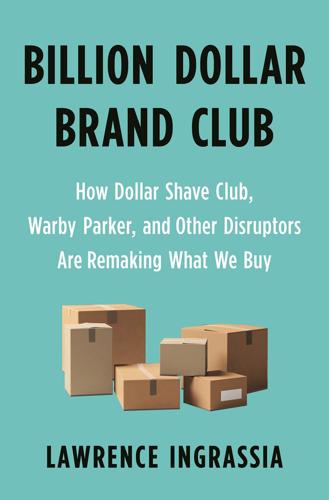
Billion Dollar Brand Club: How Dollar Shave Club, Warby Parker, and Other Disruptors Are Remaking What We Buy
by
Lawrence Ingrassia
Published 28 Jan 2020
It is something that online shoppers never see or even think about, unless their order is late or gets lost. But it’s something that direct-to-consumer brands obsess about, from the speed to the accuracy to the cost. The robots at work in the Massachusetts warehouse are the second generation of robots deployed by Quiet Logistics, founded in 2009 by two industry veterans intent on creating the automated warehouse of the future. Initially, they had used robots from another company, only to be informed that they would no longer be serviced. Their future in jeopardy, Quiet Logistics’ founders—with no robotics experience—scrambled to build their own, better robots under a new company called Locus Robotics.
…
The enticement of getting a slice of the billions of dollars in delivery revenue has resulted in a frenzied race to make every step along the way faster or cheaper or better for the consumer. Some start-ups have focused on the shipment of cargo from an overseas manufacturer to a U.S. port; others, on moving goods from the dock to the warehouse; some on building robots and highly automated warehouses to provide the most efficient handling after an order is placed; others, on developing smartphone apps that help truck drivers to fill empty space on their rigs, or apps that allow online shoppers to track an order every step of the way. Many are tackling the last-mile problem, a growing issue as the number of packages delivered to doorsteps is growing exponentially.
…
Doing this efficiently is far more complicated. Many orders can be for more than one item—toothpaste, mouthwash, shampoo, and face wash, for example. This requires locating individual items quickly and then making sure every package is filled with the right products and sent to the right address. The automated warehouse that AllPoints helped set up for Drugstore.com in 2000 used a series of conveyors coursing through the warehouse to carry orders to packing stations after workers had picked the items from shelves. Advanced for its time, it still required a lot of manual labor and was prone to bottlenecks if, for instance, a conveyor broke or slowed down.

Arriving Today: From Factory to Front Door -- Why Everything Has Changed About How and What We Buy
by
Christopher Mims
Published 13 Sep 2021
This is not a special characteristic of Amazon’s mobile shelving systems, mind you, but a characteristic of all random-access storage systems of its kind, be they digital or physical. The first time I heard of the principle was 4,000 miles away, in an even more automated warehouse in a suburb of London owned by the U.K.-based grocery delivery company Ocado. There, totes of groceries descend into an enormous three-dimensional matrix of goods that are retrieved by robots moving high above, hoisting totes with long cables. The layout and mechanism of Ocado’s and Amazon’s automated warehouses could hardly be more different, and yet both companies had arrived at the same mechanism for organizing them—random stow. Full-time associates rotate through jobs at fulfillment centers, so it’s entirely possible that the person who stowed an item one day could be picking it the next.
…
You will learn what technology your cell phone has in common with spacecraft, cruise missiles, and the navigation systems of Polynesian explorers. You’ll also find a (hopefully) accessible explanation of the “thinking” process of the AI (artificial intelligence) that drives an autonomous vehicle. You’ll learn why automated warehouses are like microchips that process stuff instead of bits, and how the two were designed with the same principles in mind. You will be introduced to “Bezosism,” that braiding together of management practices, AI, workplace surveillance, robots, and hard automation that is the engine of Amazon’s success, and possibly the future of all low-skilled labor.
…
This is true—she got the flu during her month at Amazon and had to take time off—but also an admission that a reasonably healthy woman in her midthirties can acquire a permanent, if not exactly debilitating, injury by working as an Amazon associate for as little as three weeks. (Workweeks at Amazon typically last four days.) Then there was the matter of the work itself. In its videos and tours, Amazon touts its automated warehouses, the ones with the pick towers and robot floors full of Mick Mountz’s mobile shelves atop Kiva drive units. Look, they say, in so many words, these robots are making everyone’s jobs easier. “The robots change the work so they allow us—people don’t have to walk as far, which is a complaint that we’ve heard in the past,” Jeff Wilke, whose official title at the time was CEO of worldwide consumer at Amazon, told a film crew from the PBS documentary series Frontline in 2019.

Inside the Robot Kingdom: Japan, Mechatronics and the Coming Robotopia
by
Frederik L. Schodt
Published 31 Mar 1988
If the larger robots in auto plants look like huge buzzards in the way they swoop and weave, these are nimble sparrows, hunting and pecking, picking up components from supply shoots, inserting them into holes on printed circuit boards, soldering, tightening screws, drilling holes, or feeding parts to more specialized machinery. The assembly lines are supplied by computer-controlled robot carts, or Automated Guided Vehicles (AGV), which bring parts as needed from automated warehouses, following magnetic tape or wires buried in the floor, like dogs tracking a scent. In most of the world, industrial robots are the property of huge corporations. But again, not in Japan. The most heavily publicized factories in Japan are the giant, ultramodern "lights out" plants nearly devoid of people, where machines work around the clock and in the dark of night.
…
As if in a Japanese home, visitors to the Casio plant all remove their shoes and don special rubber slippers on entering the spotless manufacturing area. Cleanliness is important, but so is prevention of static electricity—the mortal enemy of microelectronics. On the second floor the calculators are assembled in two production lines, with two people per line. An automated warehouse rotates its racks of parts, rather like the revolving shelves in a jewelry store, and, selecting one out of eight thousand boxes resembling soda pop bottle containers, disgorges it onto a waiting robot cart, or AGV. Tooting a little ditty to warn off humans, the AGV takes the parts to the lines, where seventy robots and other computerized machinery assemble and connect the VLSI (very large scale integration) chips, the LCD display, and the solar battery to a printed circuit board base—in this case a thin carbon film—and package it.
…
Tooting a little ditty to warn off humans, the AGV takes the parts to the lines, where seventy robots and other computerized machinery assemble and connect the VLSI (very large scale integration) chips, the LCD display, and the solar battery to a printed circuit board base—in this case a thin carbon film—and package it. Robots using vision systems also test the keypads and displays to see that they function properly, and then discharge the finished calculator at the end of the line to an AGV, which returns it to the automated warehouse. Actual assembly of a calculator takes only 2.8 seconds. Operating day and night, Casio claims to be able to produce 1.5 million calculators per month in these facilities alone. With robots, AGV, and other computer-controlled machinery, the Casio factory is a true FMS system; over sixteen different models of calculators in a variety of different sizes can be produced in virtually any quantity desired.
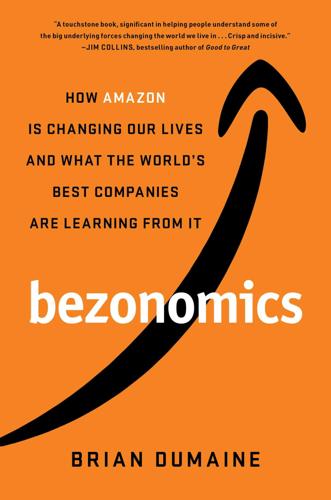
Bezonomics: How Amazon Is Changing Our Lives and What the World's Best Companies Are Learning From It
by
Brian Dumaine
Published 11 May 2020
James Bloodworth is a British: James Bloodworth, “I Worked in an Amazon Warehouse. Bernie Sanders Is Right to Target Them,” The Guardian, September 17, 2018. He describes a workplace: Ibid. It opened its Andover: “A 360° Tour of Ocado’s Andover CFC3 Automated Warehouse,” Orcado Technology video, posted on YouTube May 10, 2018, https://www.youtube.com/watch?v=JMUNI4UrNpM. Under each square: James Vincent, “Welcome to the Automated Warehouse of the Future,” The Verge, May 8, 2018. In February 2019, a fire: “Ocado Warehouse Fire in Andover Started by Electrical Fault,” BBC News, April 29, 2019. On the day the deal beacame public: Naomi Rovnick, “Ocado Profits Dip as Costs of Robot Warehouses Climb,” Financial Times, July 10, 2018.
…
Now tech giants such as Alibaba, JD.com, Tencent, and even Google’s parent, Alphabet—with its smart home devices and self-driving cars—are joining Amazon in its quest to infiltrate every corner of our lives with AI. This has dire implications for the global job market. As these companies automate their warehouses, use drones and self-driving trucks for delivery, many solid blue-collar jobs will disappear. Moreover, as Amazon and other global tech giants move into new industries, they’ll accelerate the digitization of health care, banking, and other sectors of the economy and have an even bigger impact on jobs.
…
The company says that when it asked a number of professional musicians to listen to AIVA’s pieces, none guessed the music was composed by a computer. So, what’s an out-of-work composer to do? Train to be a radiologist only to find that that skill, too, has been usurped by a computer? So far, the Amazon Go store, automated warehouses, and self-driving delivery vans are just early warning signs of a wave of new technologies that will make hundreds of millions of jobs obsolete around the world. For most people, the pink-slip-bearing robots haven’t arrived yet. But all signs point to the fact that they’re coming, except for those who exist in certain insulated professions—often ones that are high-touch or have an emotional component.
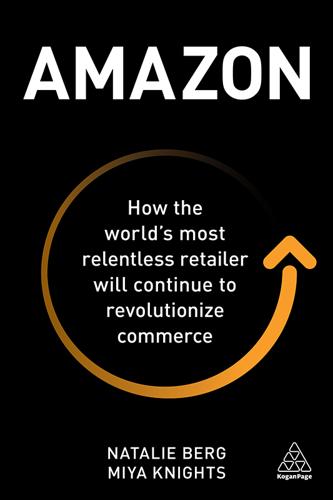
Amazon: How the World’s Most Relentless Retailer Will Continue to Revolutionize Commerce
by
Natalie Berg
and
Miya Knights
Published 28 Jan 2019
In many ways, the Whole Foods Market acquisition was an admission that the grocery category will always require an element of physical retail, albeit one of a more versatile nature. At the same time, as we’ve already seen with other sectors, technology will dismantle the barriers traditionally associated with buying food online, while continued urbanization will simultaneously drive demand and bring costs down. Automation – from warehouse robotics to driverless delivery trucks – will improve supply chain efficiencies and the rise in third-party delivery services (Instacart and Shipt, for example) will allow more supermarkets to offer speedy delivery without the hefty investment in infrastructure or systems. Meanwhile, the customer value proposition for online grocery is exploding; today, consumers benefit from improved mobile phone interfaces, single sign-ons, greater personalization and site navigation, automated lists, recipe inspiration, delivery passes, voice-activated shopping, simplified replenishment, same-day delivery and alternatives to home delivery such as click & collect or automated lockers.
…
However, with a price tag of nearly US $2 billion, Kroger chose to take a 5 per cent stake in Ocado worth $247 million instead of acquiring the company. Kroger made the official announcement of their intent with Ocado on May 15, 2018. According to the press release, Ocado will provide Kroger with various systems to help the company manage warehouse operations, introduce automation, and provide Kroger with an advanced solution for logistics and delivery route planning. The focus of Ocado’s efforts will be on helping Kroger more efficiently fulfil online grocery orders and assembling orders for Kroger’s ClickList curbside service. A total of 20 CFCs are scheduled to be built over a three-year period beginning in 2018.
…
Some analysts and grocery executives believe Ocado’s model isn’t suited to the US market, given the fact much of the US population is dispersed across many towns and suburbs with small populations, whereas the UK is densely populated; ideal conditions for online grocery and last-mile delivery. Outside urban areas, many analysts believe it makes more sense to focus on having customers shop for groceries inside stores instead of building high-tech automated warehouses. I voiced similar concerns to Kroger’s executive team about Ocado’s effectiveness in the UK vs the realities Ocado will encounter in the US. However, I recommended a solution to Ocado and Kroger that if adopted, will eliminate the obstacles Ocado will face. The solution will also transform Ocado’s business model, allowing the company to expand into a channel they currently do not serve.

Rise of the Robots: Technology and the Threat of a Jobless Future
by
Martin Ford
Published 4 May 2015
No one doubts that technology has the power to devastate entire industries and upend specific sectors of the economy and job market. The question I will ask in this book is bigger: Can accelerating technology disrupt our entire system to the point where a fundamental restructuring may be required if prosperity is to continue? Chapter 1 THE AUTOMATION WAVE A warehouse worker approaches a stack of boxes. The boxes are of varying shapes, sizes, and colors, and they are stacked in a somewhat haphazard way. Imagine for a moment that you can see inside the brain of the worker tasked with moving the boxes, and consider the complexity of the problem that needs to be solved.
…
Rather than having workers roam the aisles selecting items, a Kiva robot simply zips under an entire pallet or shelving unit, lifts it, and then brings it directly to the worker packing an order. The robots navigate autonomously using a grid laid out by barcodes attached to the floor and are used to automate warehouse operations at a variety of major retailers in addition to Amazon, including Toys “R” Us, the Gap, Walgreens, and Staples.23 A year after the acquisition, Amazon had about 1,400 Kiva robots in operation but had only begun the process of integrating the machines into its massive warehouses. One Wall Street analyst estimates that the robots will ultimately allow the company to cut its order fulfillment costs by as much as 40 percent.24 The Kroger Company, one of the largest grocery retailers in the United States, has also introduced highly automated distribution centers.
…
Kroger’s system is capable of receiving pallets containing large supplies of a single product from vendors and then disassembling them and creating new pallets containing a variety of different products that are ready to ship to stores. It is also able to organize the way that products are stacked on the mixed pallets in order to optimize the stocking of shelves once they arrive at stores. The automated warehouses completely eliminate the need for human intervention, except for loading and unloading the pallets onto trucks.25 The obvious impact that these automated systems have on jobs has not been lost on organized labor, and the Teamsters Union has repeatedly clashed with Kroger, as well as other grocery retailers, over their introduction.
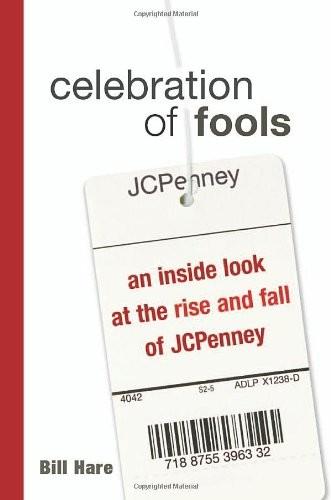
Celebration of Fools: An Inside Look at the Rise and Fall of JCPenney
by
Bill Hare
Published 30 May 2004
Batten identified the emerging shopping-center moguls—the DeBartolos and Simons—and figured they might be interested in an anchor-store partner whose leases they could take to the bank. It became a marriage made in heaven. Committing to the expensive and protracted project of starting a catalog. Batten bought a small catalog operation, the General Merchandise Company of Milwaukee, primarily because of its technology. Its fully automated warehouse made anything at Sears and Wards look archaic. Even farther out was developing a way to recover data at the point of sale in the new stores. Nobody else had ever thought about doing it. Not Federated, not IBM, not anyone—and therein lies a story (coming up). Emotionally at least, the most seismic change of them all: consumer credit.
…
They feel like they're part of a progressive organization on the cutting edge of things. Which is of no small value." [2]Twenty years later Batten could not recall the man's name. The Grocery Bag Soon after taking over catalog in 1966, Seibert went to Atlanta to inspect the world's largest, most highly automated warehouse. The building was just being completed, and his driver suggested a sight-seeing approach. Before the warehouse came into view, they turned up a hill and stopped, the young man motioning and saying, "Right up there, Mr. Seibert, for the sight of sights." "Kid's a romantic," Seibert thought as he walked toward the hilltop, the driver several steps behind.
…
Penney Shareholders Hammer CEO Reuters Officially, the shareholders meeting was moved to Lenexa in order to emphasize the company's excellent capability in catalog fulfillment. Lenexa was the location of a typically big Penney distribution center (like Don Seibert's original giant in Atlanta). Highly automated, the warehouses supplied stores and processed a stream of catalog orders—and JCPenney Internet sales. Filling orders was a big hang-up for most of the new Internet retailers, and Penney, because of its multibillion-dollar catalog business, found itself fortunately positioned to move as fast as JCPenney dot-com could go.

Machines of Loving Grace: The Quest for Common Ground Between Humans and Robots
by
John Markoff
Published 24 Aug 2015
At the time it was only a half decade since ENIAC, the first general purpose digital computer, had been heralded in the popular press as a “giant brain,” and just two years after Norbert Wiener had written his landmark Cybernetics, announcing the opening of the Information Age. Shockley’s initial insight presaged the course that automation would take decades later. For example, Kiva Systems, a warehouse automation system acquired in 2012 by Amazon for $775 million, had the insight that the most difficult functions to automate in the modern warehouse were ones that required human eyes and hands, like identifying and grasping objects. Without perception and dexterity, robotic systems are limited to the most repetitive jobs, and so Kiva took the obvious intermediate step and built mobile robots that carried items to stationary human workers.
…
While the humans work in one location, the Kiva robots maneuver bins of individual items at just the right time in the shipping process, and the humans pick out and assemble the products to be shipped. Yet Kiva is clearly an interim solution toward the ultimate goal of building completely automated warehouses. Today’s automation systems cannot yet replace human hands and eyes. The ability to quickly recognize objects among dozens of possibilities and pick them up from different positions remains a uniquely human skill. But for how long? It doesn’t take much imagination to see Baxter, or a competitor from similar companies like Universal Robots or Kuka, working in an Amazon warehouse alongside teams of mobile Kiva robots.
…
At the beginning of that month, 60 Minutes had aired a segment about Jeff Bezos and Amazon that included a scene in which Bezos led Charlie Rose into a laboratory and showed off an octocopter drone designed to deliver Amazon products autonomously “in 30 minutes.”12 The report sparked another flurry of discussions about the growing role of robots in society. The storage and distribution of commercial goods is already a vast business in the United States, and Amazon has quickly become a dominant low-cost competitor. Google is intent on competing against Amazon in the distribution of all kinds of goods, which will create pressure to automate warehouse processes and move distribution points closer to consumers. If the warehouse was close enough to a consumer—within just blocks, for example, in a large city—why not use a drone for the “last mile”? The idea felt like science fiction come to life, and Rose, who appeared stunned, did not ask hard questions.

The People's Republic of Walmart: How the World's Biggest Corporations Are Laying the Foundation for Socialism
by
Leigh Phillips
and
Michal Rozworski
Published 5 Mar 2019
Permanent positions are few, but they come with some security, slightly higher pay and limited benefits; they are dangled as carrots before temporary workers, encouraging competition and overwork, further fostering a climate of uncertainty and fear. With the help of robots, the average time to fill an order in a warehouse automated by Kiva technology has plummeted from ninety minutes down to fifteen. Working conditions, however, haven’t budged: the work remains as dull and draining as ever, warehouses remain hot, and the pace of work can be absurdly fast, regardless of the level of automation. While workers in automated warehouses stand all day and try to keep up with the robots zooming by, workers in the nonautomated warehouses can expect to walk nearly double the distance on a daily shift of a typical mail carrier.

Exponential: How Accelerating Technology Is Leaving Us Behind and What to Do About It
by
Azeem Azhar
Published 6 Sep 2021
Kramer, ‘The Biggest Thing Amazon Got Right: The Platform’, Gigaom, 12 October 2011 <https://gigaom.com/2011/10/12/419-the-biggest-thing-amazon-got-right-the-platform/> [accessed 18 September 2020]. 30 The approach has become de rigueur among other digital cognoscenti, but Bezos’s email should surely be considered as one of the single most important internal communications of all time. 31 Chris Johnston, ‘Amazon Opens a Supermarket with No Checkouts’, BBC News, 22 January 2018 <https://www.bbc.com/news/business-42769096> [accessed 18 September 2020]. 32 Peter Holley, ‘Amazon’s One-Day Delivery Service Depends on the Work of Thousands of Robots’, Washington Post, 7 June 2019 <https://www.washingtonpost.com/technology/2019/06/07/amazons-one-day-delivery-service-depends-work-thousands-robots/> [accessed 18 September 2020]. 33 Harry Dempsey, ‘Amazon to Hire Further 100,000 Workers in US and Canada’, 14 September 2020 <https://www.ft.com/content/9817aae3-1e89-4383-aa34-742447d5794a> [accessed 18 September 2020]. 34 ‘Netflix Continues to Hire Through the Pandemic, Says Co-CEO Reed Hastings’, Bloomberg, 9 September 2020 <https://www.bloomberg.com/news/videos/2020-09-09/netflix-continues-to-hire-through-the-pandemic-video> [accessed 18 September 2020]. 35 ‘Netflix: Number of Employees 2006-2020’, Macro Trends <https://www.macrotrends.net/stocks/charts/NFLX/netflix/number-of-employees> [accessed 27 March 2021]. 36 Vishnu Rajamanickm, ‘JD.Com Opens Automated Warehouse That Employs Four People but Fulfills 200,000 Packages Daily’, FreightWaves, 25 June 2018 <https://www.freightwaves.com/news/technology/jdcom-opens-automated-warehouse-that-employs-four-people-but-fulfills-200000-packages-daily> [accessed 27 March 2021]. 37 Reuters Staff, ‘Dish to Close 300 Blockbuster Stores, 3,000 Jobs May Be Lost’, Reuters, 23 January 2013 <https://www.reuters.com/article/us-blockbuster-storeclosings-idUSBRE90M05I20130123> [accessed 7 January 2021]. 38 Daron Acemoglu, Claire LeLarge and Pascual Restrepo, Competing with Robots: Firm-Level Evidence from France, Working Paper Series (National Bureau of Economic Research, February 2020) <https://doi.org/10.3386/w26738>. 39 Daron Acemoglu and Pascual Restrepo, Robots and Jobs: Evidence from US Labor Markets, Working Paper Series (National Bureau of Economic Research, March 2017) <https://doi.org/10.3386/w23285>. 40 David Klenert, Enrique Fernández-Macías and José-Ignacio Antón, ‘Don’t Blame It on the Machines: Robots and Employment in Europe’, VoxEU, 24 February 2020 <https://voxeu.org/article/dont-blame-it-machines-robots-and-employment-europe> [accessed 10 September 2020]. 41 Till Leopold et al., The Future of Jobs 2018, World Economic Forum <https://wef.ch/2NH6NiV> [accessed 25 September 2020]. 42 Leslie Willcocks, ‘Robo-Apocalypse Cancelled?
…
Britain’s Ocado is widely regarded as one of the most sophisticated grocery retailers in the world. It has huge, wholly automated factories where cuboid robots scuttle around picking up lettuces and ketchup and shampoo, nary a human in sight. But between 2016 and 2020, Ocado’s headcount grew some 43 per cent. Chinese retailer JD.com has also invested heavily in warehouse automation. In 2018, the firm opened a warehouse that could handle 200,000 orders a day – with only four staff.36 Yet the following year, JD.com added 48,000 employees to its payroll, an increase of more than 27 per cent. All this means that we’re left with a slightly different picture of our supposedly jobless future.
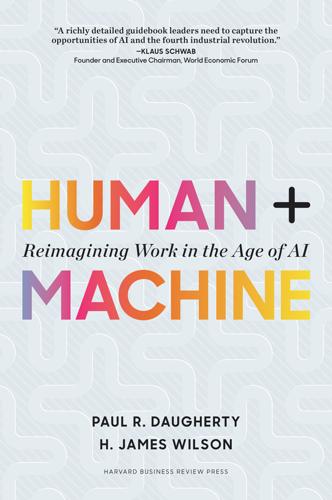
Human + Machine: Reimagining Work in the Age of AI
by
Paul R. Daugherty
and
H. James Wilson
Published 15 Jan 2018
Because the only human interaction with the goods stored at a warehouse is when they’re loaded on and off the trucks, we must ask the question: What happens to the human workers at the warehouse? Caracappa says Symbotic currently retrains many of them. Those who performed maintenance on conveyor belts, for instance, are trained to fix robots. And there are new roles, too. Caracappa says system operators monitor the entire flow of robots. “Those roles are typically not in the warehouse before automation comes in,” he explains, “but we’ll hire them locally and the client will be part of the process.”10 (In part two of this book, we will explore these new types of jobs in depth when we discuss the missing middle in detail.) Supply Chains That Think Smarter warehouses are just the beginning.
…
Those improvements are the types sought by consumer goods giant Procter & Gamble, whose CEO recently stated his goal of cutting supply-chain costs by a whopping $1 billion a year. Part of those savings will come from near-term efforts like the use of AI and the internet of things (IoT) technologies to automate warehouses and distribution centers. And other savings will come from longer-term projects, including the customized automation of product deliveries of up to seven thousand different stock-keeping units. Whether these and other initiatives will enable P&G to save the company $1 billion annually in supply-chain costs remains to be seen, but it’s safe to say that AI will be playing a significant role in those efforts.
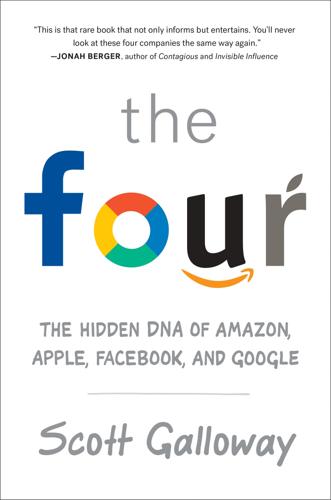
The Four: How Amazon, Apple, Facebook, and Google Divided and Conquered the World
by
Scott Galloway
Published 2 Oct 2017
The need for stuff is real: stuff keeps us warm and safe. It allows us to store and prepare food. It helps us attract mates and care for our offspring. And easy stuff is the best stuff, because it consumes less energy and gives you time to do other important things. Without capital-hungry stores, Bezos could invest in automated warehouses. Scale is power, and Amazon was able to offer prices no brick-and-mortar retailer could afford. He offered deals—to loyal customers, to authors, to delivery companies, to resellers agreeing to run ads on their own websites. He drew more and more partners to Amazon. Bezos broke out of the narrow world of books and DVDs and into . . . everything.
…
About.com, 147–48, 150–51 Age of Enlightenment, 127 Airbnb, 225–27 Alibaba, 206, 206–10 Amazon, 13–62 agility of, 235 and Alexa/Echo, 9, 31, 45, 50–52, 56 algorithm of, 105, 106 Amazon Marketplace, 25, 41 Amazon Prime, 13, 14, 37, 42, 48, 48–49 Amazon Web Services, 37, 41–42 analog moats of, 91 automated warehouses of, 27, 29–30, 42, 52–54, 91 book sales of, 25–26, 45 brain-based appeal of, 176–77 and brand era, 50–52, 172–73 capitalization of, 3, 32–35, 36, 38–39, 54, 56, 188–89 and competition, 9, 25, 56, 181 consumers’ alliance with, 167–68 consumer trust in, 31, 32, 41, 56 current state of affairs, 3–4 data collection of, 32, 200 effect on retail sector, 24–25, 28–29, 57–59 and failure, 39, 40 frictionless purchases on, 32, 186–87 fulfillment infrastructure, 3, 42, 49, 54, 55, 56, 91, 166, 181, 186 future of, 165–66, 182 global reach of, 190–91, 191 and Google, 60, 188–89 growth of, 27–28, 34, 41, 53 headquarters of, 202 and hunter/gatherer strategies, 14–16, 25–26, 44, 176–77 likability of, 193 multichannel retail, 44–49 and Procter & Gamble (P&G), 194 product differentiation of, 186–87 and product searches, 8, 189 profits/revenue, 17–18, 34–35 and Quidsi, 46 and rational decision making, 170 risk taking, 35–39, 40 scalability, 24–25 sellers’ joining of, 166 stock appreciation of, 28, 28 and stores, 30, 31, 36, 43–45, 55, 56 and taxes, 34, 193 vertical integration of, 195 and Walmart, 228 Whole Foods acquisition, 44, 54, 55–56, 59 zero-click ordering, 31–32, 56 See also Bezos, Jeff analog moats, 10, 90–91, 92 Android, 155, 178 Apollo Project, 267 Apple, 63–95 algorithms of, 105 analog moats of, 90–91, 92 behavioral data of, 200 and competition, 9, 67, 90–91, 92, 179–81 computers, 69, 73–74, 132, 161, 180 Cook’s leadership of, 68–69, 87 current state of affairs, 4 and download piracy, 68 and education market, 93–95 and failure, 39 genitalia-based appeal of, 178–79 global reach of, 190, 191 headquarters of, 202 innovator status, 64, 67, 68, 161 intellectual property theft, 161, 166 iPod, 67–68, 74, 79 likability of, 193 low-cost production of, 88–89 luxury status of, 69–72, 74–76, 78–79, 80–86, 87, 88, 92 privacy issue, 63–64, 136 product differentiation of, 186 profits/revenue, 4, 69, 70, 85 risk taking, 68 secular worship of, 66–67 stores, 80–81, 82–83, 89, 91, 195–96 strategy for success, 57 and taxes, 83, 193, 197 vertical integration of, 195–96 vs.

Frostbite: How Refrigeration Changed Our Food, Our Planet, and Ourselves
by
Nicola Twilley
Published 24 Jun 2024
Today it is changing again, at the confluence of demographic shifts and new economic trends. * * * — “All right, our kid,” Dave Priest said to the warehouse operator. “Strap her in—she’s writing a book about the cold chain and she wants a ride on the crane.” Priest, a genial northerner, is the general manager of NewCold Wakefield, a fully automated frozen warehouse that can hold as many pallets of food as Springfield Underground, all stacked up in a bright-white, twelve-story cube built atop a former coal mine in England’s industrial northeast. “I’ve told her she’s better off switching it to a sitcom,” he continued as I climbed into a tiny gray cabin that hung off the side of a floor-to-ceiling steel beam.
…
J., 78–79 Collingham, Lizzie, 267–68 community cooling hubs, 298, 311–12 comparative advantage principle, 128–29 Congolese traders, 281, 284, 291 consumer engineering, 227–30 controlled atmosphere bags, 5, 130–31, 301–2 storage, 118–25, 130, 158, 239 convenience foods, 22, 171–72, 203, 232, 251, 310 Cooking with Cold (Kelvinator), 247–48 Cook’s Illustrated, 248–49 “Cool Air” (Lovecraft), 86–87 Costco, 146, 232 COVID-19, 5, 219, 271, 286–88, 298–99, 311 Cowan, Ruth Schwartz, 223 Craig, Lee, 263–68, 274–75 Critchell, James, 80–82, 87 crop diversity, 316 Crosley Shelvador refrigerator, 228 cryosphere, artificial, 3, 6–9, 13, 15, 59, 62, 142, 146, 191 cryosphere, natural, 6, 15 Cuba, 50–51, 54 Cullen, William, 57–58 Cultural Revolution (China), 206 D Dai Jianjun, 212–14, 273 dairy, 107, 212, 239, 244 becomes a staple, 94 consumption of, 69, 310 and diets, 67, 113, 205, 258, 268, 270 and health, 91, 265 preservation of, 88 refrigeration of, 9, 12, 14, 198–99, 221, 254 See also cheese; ice cream; milk Dalrymple, Dana, 121, 124 Danone, 3–4 D’Arrigo, Andrew and Stephen, 137 D’Arrigo, Gabriela, 137, 141–44, 239 D’Arrigo New York, 137 date labels, 236–38, 243 dating, 8, 217–20, 233, 257 David, Elizabeth, 47 Davis, Simon, 290–91 de Boer, Jelle Zeilinga, 134–35 De La Vergne company, 61 Deaton, Shawn, 18–20 deforestation, 107–8, 158–59, 293 Demos, Steve, 235–36 Deng Xiaoping, 206, 210 Descartes, René, 28 developing countries, 295, 309–12 building cold chains in, 6, 8, 285, 289, 293 delivering vaccines in, 298–99 diets of, 205, 282 lack of cold chain in, 282–83 refrigeration projects in, 285–86 See also specific countries Dickens, Charles, 68, 72, 260 diet in 1800s, 66–69, 269 American, 67–68, 172, 270, 310 and animal protein, 69, 82, 112–13, 173 cartographically eclectic, 170–72 decline in, 264, 288 in developing world, 205, 282 of hunter-gatherers, 37–38 modern Western, 272 prerefrigeration, 37–39, 267–68 and refrigerated ships/containers, 181–82, 186, 188 refrigeration’s impact on, 40, 264–70, 310 and vitamin-rich foods, 112–13, 126, 148–49 digital consumers, 205 diseases, 15 bacterial infections, 270–72, 274 chronic inflammation, 272–74 diarrhea, 61, 85, 270–72, 283 history/study of, 260–66 of plants/trees, 135, 156, 159 refrigeration and, 61, 94, 265–66, 274 related to food, 85, 94, 270–75 See also food: poisoning diversity, of food, 160, 169, 225, 267–68, 309–10, 316 DNA, 254, 317 Dodd, George, 67–68 Dowie, Harry, 84, 88–89 drinks chilled by ice, 50, 54, 60–61, 71 cocktails, 244–45 mechanical refrigeration for, 60 and temp/taste receptors, 245–47, 272 See also beer; breweries; orange juice drought, 131, 296, 307, 316 drying food, 35–36, 67, 71, 273 DunAn Artificial Environment Equipment Company (China), 296–97 Dunlop, Fuchsia, 273 DuPont, 20–21 E East of Eden (Steinbeck), 124, 126–27 Eastman, Timothy C., 76, 78 Eastman Kodak, 127 economic growth, 209, 264–65 economics, 8, 309 Edison, Thomas, 223 Egg Reporter, The, 83–85 eggs, 37, 67, 92–95, 239–41 Egypt, 16 Eichengreen, Meyer, 83 Einstein, Albert, 297 electric refrigerators, 31, 61, 208, 220–27 Electrolux-Servel, 222–23 Elizabeth, Queen, 319 Emerson Climate Technologies (China), 294, 296 energy efficiency, 204–5, 297, 307 in refrigeration, 193, 222, 275, 293–94, 309 renewable, 77–78, 294, 302 sustainable, 286 environmental impact of cattle ranching, 107–8 dietary shifts and, 259 of freezer trawlers, 107 of global cold chain, 293–99 of growing bananas, 158–59 of industrialization, 266 of large-scale farming, 174 of manure lagoons, 211 and natural ice trade, 61 of reefer shipping, 189–90 of refrigeration, 7–8, 275, 293–94, 309–10 of slaughterhouses, 82 environmental policies, 200, 296 Espinoza, Anthony, 3–4, 9–12, 14, 22 ethylene, 132–36, 141–46, 158, 190, 239–42, 252, 255 Evans, Judith, 287, 291–92, 297–98 Evans, Kate, 122–24 Express Channel Food Logistics, 210–11 F Falagán, Natalia, 120, 242 as ACES cofounder, 285, 287 on lettuce/salad, 129, 131, 312 on refrigerating fruit, 239 research of, 111–12, 156–57, 312 on sustainable food system, 158 farmers, 94, 157, 239 adopt ice-filled trucks, 168–69 benefit from refrigeration, 54, 77, 189, 309 in developing countries, 285, 311–12 ecological impacts of, 309–10 and frozen meat trade, 78–81 in Great Britain, 80–81 large-scale, 156, 172–74, 189 of orange trees, 154–56 small-scale, 172, 289, 309–12 and smart farms, 292 and spray preservative, 301, 306 farm-to-table food, 4–7, 283 fast food, 6–7, 106, 153, 259 FDA, 237–38, 241, 305 Federal Meat Inspection and Pure Food and Drug Acts, 89–90, 92 Feiges, Adam, 13, 198–200, 205 fermented foods, 36–37, 39, 213, 273–74, 303 field refrigeration units, 167 Fineberg, Al, 165–66 fish, 171, 213 preservation of, 35–36, 177 preserved in ice, 46, 49, 54, 279–81, 284 purchased alive, 250–51 refrigeration and, 181, 243 Rwanda’s industry of, 279–81 shipping of, 23, 174–78, 190, 251 “tuna coffins” and, 177–78 fish sticks, 45, 107, 149, 172, 178, 232 fishermen, 43, 49, 54, 71, 89, 107, 177–78, 213 flake ice, 177, 279–81, 284, 292 flash-frozen food, 171–72 flavor, 135, 213 and climate change, 307 of cold-stored apples, 118, 121–24 improved by cold, 84, 95–106, 248–49 loss of, 33, 71, 95, 142, 269–70 of meat, 71, 79 of prerefrigeration-era foods, 36–37 restoring it, 150–53 science behind, 252–55 and spray preservative, 302, 305–6 Florida, 59, 114, 148–53, 156, 199, 252–53, 256 Florida State University, 253 Florida Tomato Committee, 253 flowers/flower bulbs, 21, 175, 183, 288 Fogel, Robert, 264 Fogelman, Brian, 146–47, 149–52 food available year round, 94, 106, 181, 187, 225, 268, 309 laws for, 92, 237, 240 our relationship with, 224, 241, 308, 312 production of, 169–71, 174, 224, 312 rotting/spoilage of, 32–40, 232 safety of, 85, 87–95, 131, 289 security in, 288–89, 298 storage of, 44, 55, 238–41, 244, 250 supply of, 5, 234, 303 Food Network, 230 food poisoning, 85, 87, 94, 238, 270–71, 274, 309 Food Research Laboratory, 90 food system, 5, 169, 178–81, 198, 244, 255, 271, 307, 310–12 food waste, 35, 268, 312 in developing countries, 282–85, 289, 310 global, 293–94 and produce preservation, 302, 304–5, 307 a refrigeration by-product, 232–35, 241, 310 in the US, 232–35, 238, 284, 310 Ford, Henry, 79, 163 Fowler, Cary, 317–18, 320 France, 38–39, 54, 60–61, 76–78, 87, 191, 226–29, 311 Franklin, Benjamin, 58, 100–101 freeways, 170, 200 freeze-drying, 309 Freezine, 88, 94 Freidberg, Susanne, 86–87 Freon, 295 freshness, 311 definition of, 152, 307 and food date labels, 236–38 limited life span of, 33–35 of meat, 68–74, 79, 87 prerefrigeration, 240–41 preserved foods and, 37–40 and refrigerated food, 40, 83–88, 249–51, 299 and refrigerators, 235–38, 242–43 science behind, 86, 242 Frigidaire, 222, 227–28, 295 frigoriferare, 308 frigoriphobie, 87, 94, 309 frozen foods, 3 automated warehouses for, 202–5 Chinese dumplings, 8, 205–10, 212–13, 294 freezer burn and, 207, 232 introduction of, 171–72 snow pits for, 45–46 storage of, 6, 9–11, 14, 20–22, 195, 228 See also orange juice; specific types Frozen Water Trade, The (Weightman), 52 fruit as commodities, 137, 139, 158–59 harvesting of, 139, 255, 307 Pratt’s studies of, 186 refrigeration of, 137–42, 146, 241–43 refrigeration’s effects on, 239, 251, 254–55 shipping of, 209, 252, 254 varieties lost, 156 See also ethylene; produce; specific types Fulton Market (New York City), 54, 196 fungicides, 306 futures market, 154–56, 256–59 G Gane, Richard, 135 Garbage Project (University of AZ), 233–34 Garnett, Tara, 172, 232–33 Gary, Gabe, 194–95 Gates Foundation, 288, 304 GDP, 264–65, 283 General Electric, 218, 222–23, 227–28, 234 General Foods, 171, 184 General Motors, 222, 295 genetic engineering, 157, 252–55 geography of food, 40, 158, 169, 173, 195, 236 germ theory, 61, 264 Germany, 61, 103, 114, 174–75, 227 G.I.
…
Bill, 170 Glasgow & Thunder brewery (Australia), 59 global cold chain, 6, 205, 286, 310 commodities, 137, 146 economy, 8, 198 food system, 5, 178, 271, 312 food waste, 282–85, 293–94 market, 189 population growth, 303 seed vault, 316–20 supply chains, 180 trade, 176, 181, 190, 200 warming, 8, 293–97 Global Cold Chain Alliance, 6 Global Cooling for All, 285 Goldman, Irwin, 157 Goodwin, Barry, 264 Great Britain, 237, 245, 303 apples in, 122 automated warehouses in, 202–5 banana trade of, 139–40 cold storage research in, 114–15, 123, 131–32 food preservation in, 37–38, 70–71, 87, 111–12 ice pit experiment in, 44–46 icehouses in, 47–49, 62 Industrial Revolution of, 37–38, 261, 263 meat shipped to, 78–79, 87 prevents scurvy, 113 refrigeration in, 61, 87, 118, 213, 226 “rot box” experiment in, 32–35 wartime food anxiety in, 114 See also London, UK; Low Temperature Research Station (LTRS); NewCold Wakefield; Royston Cave (UK) Great Depression, 168–69, 225 Great Exhibition of 1851 (London), 70–71 Great Expectations (Dickens), 72, 260 Great Pittsburgh Banana Company Explosion, 144 “Greatest Refrigerator on Earth,” 55–57 Greece/Greeks, 36, 47, 134–36 greenhouse gases, 8, 293–97 Greening, Philip, 298–99 Grennes, Thomas, 264 Griesemer, Louis, 191–95 Grundig, 243 Guatemala, 158–59, 188 gut microbiome, 7, 270, 272–74 H Habiyambere, François, 279–82 Hackett, Shawn, 154–56 Hale, John, 134–35 Hallock, MN, 163–65 Hardy, William B., 131–32, 135 Harrison, James, 59 HarvestFresh fridge, 242 Harvey, R.

Visual Thinking: The Hidden Gifts of People Who Think in Pictures, Patterns, and Abstractions
by
Temple Grandin, Ph.d.
Published 11 Oct 2022
But the part of the conveyor industry where the United States stopped excelling is in highly automated systems. The company Robins founded to produce conveyor belts is now owned by an Indian multinational conglomerate. In general, automated conveyor systems are an area where Europe now excels. The German-based Kion Group is a leader in manufacturing automated warehouse systems. The company is developing a workforce trained in the skilled trades to improve supply-chain conveyor systems for maximum efficiency. In the most highly automated systems, there will always be a need for highly skilled people to install and repair the machines, the service that makes rapid delivery to your doorstep possible.
…
Minneapolis Star Tribune, February 13, 2015, B3–B5. Robertson, S. M. “Neurodiversity, Quality of Life, and Autistic Adults: Shifting Research and Professional Focuses onto Real-Life Challenges.” Disability Studies Quarterly 30, no. 1 (2010). “A Robot Maker Fetches $2.1 Billion as E-Commerce Warehouse Automation Grows.” Bloomberg News, June 22, 2016. Rubin, S. “The Israeli Army Unit That Recruits Teens with Autism.” Atlantic, January 6, 2016. https://www.theatlantic.com/health/archive/2016/01/israeli-army-autism/422850/. Sales, B. “Deciphering Satellite Photos, Soldiers with Autism Take On Key Roles in IDF.”

The Technology Trap: Capital, Labor, and Power in the Age of Automation
by
Carl Benedikt Frey
Published 17 Jun 2019
It is not perfect, but because the system can learn on its own, it is improving at a far faster rate than machines of the past.42 Thus, while robots are still far from having human-level capabilities when it comes to perception and manipulation tasks, they are becoming sufficiently sophisticated to handle gripping tasks in a structured warehouse setting, like picking items and parcels off a pallet and placing them into cartons or boxes. Just as robots entered the factories, they are gradually making an appearance outside manufacturing. Warehouse automation today is probably where factory automation was in the 1980s. It is true that many of the AI technologies discussed above are still imperfect prototypes. But it is important to remember that just about every technology was imperfect in its early days. To most observers, for example, the first telephones seemed ridiculous.
…
See mass production American Telephone and Telegraph Company (AT&T), 315 annus mirabilis of 1769, 97, 148 anti-Amazon law, 290 Antikythera mechanism, 39 Appius Claudius, 37 Archimedes, 30, 39 Aristotle, 1, 39 Arkwright, Richard, 94, 101 artificial intelligence (AI), 5, 36, 301–41, 228, 342; Alexa (Amazon), 306; AlphaGo (Deep Mind), 301, 302; Amara’s Law, 323–25; artificial neural networks, 304; autonomous robots, 307; autonomous vehicles, 308, 310, 340; big data, 303; Chinese companies, 313; Dactyl, 313; data, as the new oil, 304; Deep Blue (IBM), 301, 302; deep learning, 304; -driven unemployment, 356; Google Translate, 304; Gripper, 313; internet traffic, worldwide, 303; JD. com, 313; Kiva Systems, 311; machine social intelligence, 317; Microsoft, 306; misconception, 311; multipurpose robots, 327; Neural Machine Translation, 304; neural networks, 303, 305, 314; pattern recognition, 319; phrase-based machine translation, 304; Siri (Apple), 306; speech recognition technology, 306; Turing test, 317; virtual agents, 306; voice assistant, 306; warehouse automation, 314 artisan craftsmen, 8; in domestic system, 118, 131; emigration of, 83; factory job, transition to, 124; fates of, 17; full-time, 34; middle-income, 11, 16, 24, 135; replacement of, 9, 16, 218 Ashton, T. S., 94–95 atmospheric pressure, discovery of, 106 Austen, Jane, 11, 60–61, 69, 337 automation: adverse consequences of, 11, 240; bottlenecks to, 234; next wave of, 339; social costs of, 349; winners and losers from, 343 automobiles: cheapening of, 18, 167; industry, 202; invention of, 166; production, 165 autonomous vehicles, 308, 310, 340 Autor, David, 225, 234, 243, 254 Babbage, Charles, 119–20, 134 baby boom, 221 Bacon, Francis, 94 Bacon, Roger, 78 Baines, Edward, 111, 119–20, 124 barometer, 52, 59 Bartels, Larry, 273–75 Bastiat, Frederic, 338 Bauer, Georg, 51 Bayezid II, Sultan, 17 Benedictines, 78–79 Benjamin Franklin Bridge, 167 Benz, Karl, 148, 166 Berger, Thor, 259, 284, 359 Bessen, James, 105, 136, 247 biblio-diversity, promotion of, 290 bicycle, 165 Biden, Joseph, 238 big data, 303 Black Death, 67, 75 Blincoe, Robert, 9, 124 blue collar aristocracy, 239, 282 blue-collar jobs, disappearance of, 251, 254 Blue Wall, 284 Bohr, Niels, 298 Bostrom, Nick, 36 Boulton, Matthew, 107, 379 Boulton & Watt company, 107, 109 bourgeois virtues, 70 Bracero program, 204 Braverman, Harry, 229–30 British income tax, introduction of, 133 British Industrial Revolution: great divergence, 137; human costs of displacement, 192; machinery riots, 103, 219; path to, beginnings of, 75; reason for beginnings, 75; significance of, 8; technological event, 149; textile industry, 100.
…
Government Printing Office, 151 Usher, Abbott, 40, 45 Vanderbilt, Cornelius, 208 Varian, Hal, 328 Versailles, 84 Vespasian, Roman Emperor, 10, 40 Victorian Age, machinery critics of, 119 Vietnam War, 185 virtual agents, 306 Vitruvius, 38 Voltaire, 84 Voth, Hans-Joachim, 131, 337 wage insurance, 355 wages, American, leveling of, 211 Wall Street, depression suffered by, 211 warehouse automation, 314 washing machine, 27, 158, 160 waterwheel, 38, 44 Watt, James, 94, 106, 147, 317, 329 wave of gadgets, 30, 79, 179, 330 web designers, 248 Weber, Max, 47, 78 Wedgwood, Josiah, 127 weight-driven clock, 45 welfare capitalism, 198, 200 welfare dependency, 253 welfare programs, 240 welfare state, emergence of, 145, 221, 272 welfare system, tax-financed, 276 Wellesley, Arthur (1st Duke of Wellington), 9, 109–110 Westinghouse, 155 wheel, invention of, 35 White, Lynn, 42, 78 white-collar employment, 197, 218 Whitney, Eli, 74, 149 Whitworth, Joseph, 150 Wiener, Norbert, 230 Williamson, Jeffrey, 68, 207, 211 William the Conqueror, 44 Wilson, William Julius, 250, 252 windmill, 44 Wolfers, Justin, 336 women: college-graduated, 242; entering the workforce, 161 Word War II, 143, 230, 334 worker-replacing invention, 54 working class: as cultural phenomenon, 278; identity of, 280 World Trade Organization (WTO), 281, 286 World War I, 89, 108, 209 Wright, Gavin, 16 Wyatt, John, 101 Yang, Andrew, 291 Young, Arthur, 75 Zonca, Vittorio, 51–52 zoning, housing and, 361–62

Lessons from the Titans: What Companies in the New Economy Can Learn from the Great Industrial Giants to Drive Sustainable Success
by
Scott Davis
,
Carter Copeland
and
Rob Wertheimer
Published 13 Jul 2020
Other notable transactions were Norcross Safety Products and Metrologic, both in 2008. Not only was Metrologic a great acquisition for Honeywell, but Darius Adamczyk, Honeywell’s current CEO, came over with that deal. In 2015, Honeywell bought Elster (gas metering), followed by Intelligrated (warehouse automation) in 2016. (See Figure 5.8.) It also kept up a steady pace of smaller deals that boosted revenue in the slower periods. When prospective deals were too expensive, Cote put the spare cash into buying back stock. Honeywell’s share count fell 10 percent from 2002 to 2017, all while revenues and profits compounded.
…
We’ve seen companies that were once firmly planted in the industrial world migrated elsewhere. For example, Danaher pivoted from a legacy tools company to a healthcare company through bold spin-offs and opportunistic deals. Honeywell tossed aside its best-known business line, thermostats, to focus on warehouse automation and software. Roper transitioned from pumps to software. But these weren’t pie-in-the-sky transitions. In each case, cash flow was deployed to a higher-growth, higher-margin, more defensible, and higher-return plan, executed over a long enough time period to better manage risks inherent in big change.

Augmented: Life in the Smart Lane
by
Brett King
Published 5 May 2016
When these projects are successful, they usually informate and create better employee and customer experiences and drive companies to be more successful, grow and hire. When these projects fail, heads roll, customer and employee experiences fall and headcounts are reduced. Amazon Loves Robot Workers Projects that purely automate are far fewer and can also be seen as creating more jobs than they displace. An interesting example is that of a warehouse automation solution called Kiva Systems. Kiva Systems was founded in 2003 by Mick Mountz after his experience with the failed online grocery delivery service Webvan. Webvan was going to put all grocery stores out of business. Mountz believed Webvan failed because the high cost of warehouse operations meant that each order was too expensive to fulfil using traditional material handling and warehouse management solutions (WMS).
…
Mountz believed Webvan failed because the high cost of warehouse operations meant that each order was too expensive to fulfil using traditional material handling and warehouse management solutions (WMS). Mountz decided to create a better way to pick, pack and ship products and Kiva was born. Teaming up with Peter Wurman and Raffaello D’ Andrea, experts in robotics and engineering, the Kiva three created an entirely new way to automate the traditional warehouse. The traditional model includes receiving products into a receiving dock and having workers put away the products on shelves using forklifts and carts. Then those same workers would go into the warehouse and pick the products to fulfil the orders that needed to be assembled, packed and/or shipped.
…
Even with advanced WMS software automation systems like Manhattan Associates, HighJump or RedPrairie that can optimise the efficiencies of the workforce, order fulfilment costs remained stubbornly high, especially in low margin, high product mix orders like groceries. Kiva’s solution was groundbreaking and simple, and spawned from the answer to the question: Why have people deliver products to and from shelves if the shelves can come to them? Figure 4.6: Kiva’s automated guided vehicle system for warehouse management (Credit: Kiva/Amazon) Kiva created robots that locate the closest automated guided vehicle (robot) to the item that needs to be moved and directs the bot to retrieve the item. The mobile robots drive around the warehouse by navigating a series of barcode stickers on the floor.

Prediction Machines: The Simple Economics of Artificial Intelligence
by
Ajay Agrawal
,
Joshua Gans
and
Avi Goldfarb
Published 16 Apr 2018
Human pickers handle approximately 120 picks per hour. Many companies that handle high-volume fulfillment would like to automate picking. For the past three years, Amazon incentivized the best robotics teams in the world to work on the long-studied problem of grasping by hosting the Amazon Picking Challenge, focused on automated picking in unstructured warehouse environments. Even though top teams from institutions such as MIT worked on the problem, many using advanced industrial-grade robotic equipment from Baxter, Yaskawa Motoman, Universal Robots, ABB, PR2, and Barrett Arm, as of this writing they have not yet solved the problem satisfactorily for industrial use.
…
Steven Levy, “A Spreadsheet Way of Knowledge,” Wired, October 24, 2014, https://backchannel.com/a-spreadsheet-way-of-knowledge-8de60af7146e. 2. Nick Statt, “The Next Big Leap in AI Could Come from Warehouse Robots,” The Verge, June 1, 2017, https://www.theverge.com/2017/6/1/15703146/kindred-orb-robot-ai-startup-warehouse-automation. 3. L. B. Lusted, “Logical Analysis in Roentgen Diagnosis,” Radiology 74 (1960): 178–193. 4. Siddhartha Mukherjee, “A.I. versus M.D.,” New Yorker, April 3, 2017, http://www.newyorker.com/magazine/2017/04/03/ai-versus-md. 5. S. Jha and E. J. Topol, “Adapting to Artificial Intelligence: Radiologists and Pathologists as Information Specialists,” Journal of the American Medical Association 316, no. 22 (2016): 2353–2354. 6.

The Lights in the Tunnel
by
Martin Ford
Published 28 May 2011
Keep in mind that automation offers cost benefits beyond simply eliminating wages. There are also payroll taxes, benefits, vacation time, management issues (and if you eliminate workers, you can in many cases also get rid of the first line managers), etc. There are also safety and liability issues; consider the safety advantages of a fully automated warehouse. The need for technical and economic flexibility may also tend to hold back automation for a time. If a business invests heavily in specific machines to produce a particular product and then that product does not sell well, it may be stuck with equipment it does not want. The obvious answer to that is that, in the future, automation technology will be more flexible and easy to adapt to different products.

Blood in the Machine: The Origins of the Rebellion Against Big Tech
by
Brian Merchant
Published 25 Sep 2023
Ure was one of the first futurists; he conjured a nineteenth-century vision of fully automated factories, producing goods around the clock. “Central to Ure’s book is a social fantasy of autogenesis—machines that produce without workers,” as one design historian put it. Entrepreneurs, factory operators, and executives have been chasing that fantasy ever since. In the twenty-first century, Amazon touts plans for fully automated warehouses, high-tech companies aspire to “dark” factories—factories emptied of humans and automated to such an extent that they can be run without the lights on—and robotics and enterprise software firms pitch a battery of automation services and products to clients afraid of being left behind. Now, as then, we’re made to believe that we are in an uncomfortable but necessary transitional period, right before technology will inevitably solve all our woes.
…
By the time someone leaves the fulfillment center—perhaps one that stretches out like an enormous brutalist shoebox across the Southern California desert or New York hinterlands—they might realize they had applied, attended orientation, taken a drug test, and been given a job at Amazon without ever once speaking directly to anyone who worked there. Of the major tech companies, Amazon has the largest labor force. It has the most pointed interest, and largest investment, in mass automation. The company has said it aims to have its warehouses fully automated by 2030, when Bezos hopes a menagerie of sorting, picking, and transport robots will do what human workers do now. Until then, Amazon will continue to be one of the largest employers in the United States, with 1.6 million workers on its payroll as of 2022—second only to Walmart. Analysts at MarketWatch estimate that for every job Amazon itself created, it has probably destroyed two or three others, thanks to its ultra-efficient business model and its wresting of market share from brick-and-mortar retailers.

After the New Economy: The Binge . . . And the Hangover That Won't Go Away
by
Doug Henwood
Published 9 May 2005
Good data wasn't available for MGI to study the sector as a whole, so they focused on a small, important subsector, pharmaceutical wholesaling. It's technologically advanced, and it's Hkely to be emulated by other sectors. Its strong productivity performance, MGI concluded, was the result of warehouse automation, better organization of work tasks, consoHdation among retailers (fewer, bigger chains are cheaper and easier to service), consolidation in wholesale trade itself, and a shift to higher-value drugs— in other words, consolidation, better ways of picking and packing, and more "blockbuster drugs."

The Economic Singularity: Artificial Intelligence and the Death of Capitalism
by
Calum Chace
Published 17 Jul 2016
Kiva produces robots which collect goods on pallets from designated warehouse shelves and deliver them to human packers in the bay area of the warehouse. Amazon paid $775m for the nine-year old company and promptly dispensed with the services of its sales team. Re-named Amazon Robotics in August 2015, it is dedicated to supplying warehouse automation systems to Amazon, which obviously considers them an important competitive advantage. Secretaries Most of the examples of automation given above involve manual work. There is one occupation which depends almost entirely on cognitive skills which has been largely automated out of existence: secretaries.
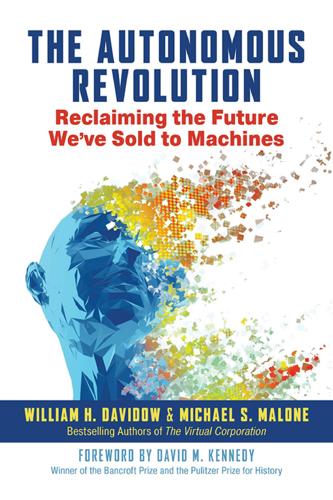
The Autonomous Revolution: Reclaiming the Future We’ve Sold to Machines
by
William Davidow
and
Michael Malone
Published 18 Feb 2020
There are 3.5 million professional truck drivers in our country, and about 8.7 million people employed in the trucking business.26 Many of them will be displaced. If just one-quarter of them are, that’s more than 2 million jobs.27 No doubt autonomous vehicles will also drive down the costs of delivery services. The business model for groceries, retail stores, and many commodity products will consist of large automated warehouses that deliver products ordered over the Internet to the customer’s home or to a convenient location for pick-up within a few hours. Some stores will disappear; others will be transformed into showrooms. Approximately 15.7 million Americans currently work in the retail sector.28 By making delivery more convenient and cost-effective, the autonomous vehicle will spur the growth of virtual retailers, which need only about a third as many employees as brick-and-mortar stores to generate the same volume in sales.29 So, every 10 percent increase in market share by virtual retailers will eliminate on the order of 1 million traditional retail jobs.
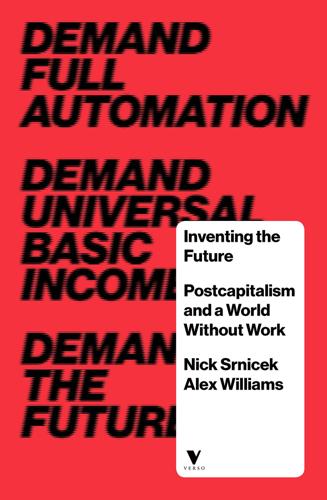
Inventing the Future: Postcapitalism and a World Without Work
by
Nick Srnicek
and
Alex Williams
Published 1 Oct 2015
These are tasks that computers are perfectly suited to accomplish once a programmer has created the appropriate software, leading to a drastic reduction in the numbers of routine manual and cognitive jobs over the past four decades.22 The result has been a polarisation of the labour market, since many middle-wage, mid-skilled jobs are routine, and therefore subject to automation.23 Across both North America and Western Europe, the labour market is now characterised by a predominance of workers in low-skilled, low-wage manual and service jobs (for example, fast-food, retail, transport, hospitality and warehouse workers), along with a smaller number of workers in high-skilled, high-wage, non-routine cognitive jobs.24 The most recent wave of automation is poised to change this distribution of the labour market drastically, as it comes to encompass every aspect of the economy: data collection (radio-frequency identification, big data); new kinds of production (the flexible production of robots,25 additive manufacturing,26 automated fast food); services (AI customer assistance, care for the elderly); decision-making (computational models, software agents); financial allocation (algorithmic trading); and especially distribution (the logistics revolution, self-driving cars,27 drone container ships and automated warehouses).28 In every single function of the economy – from production to distribution to management to retail – we see large-scale tendencies towards automation.29 This latest wave of automation is predicated upon algorithmic enhancements (particularly in machine learning and deep learning), rapid developments in robotics and exponential growth in computing power (the source of big data) that are coalescing into a ‘second machine age’ that is transforming the range of tasks that machines can fulfil.30 It is creating an era that is historically unique in a number of ways.

Winning Now, Winning Later
by
David M. Cote
Published 17 Apr 2020
New products and services helped us win 75 percent of the aerospace contracts we pursued during my last seven years, and they also helped boost our non-US sales as a percentage of total sales. On the strength of our new technologies, we’ve taken leadership positions in numerous markets—from small jet engines to commercial cockpit avionics, security systems to barcode scanning, warehouse automation to refinery and petrochemical technologies. And we achieved this growth without having to blow up our quarterly results. You can achieve similar results in your business, but only if you’re willing to think critically about how your organization can create new products and services, and how you might do it more swiftly and better.
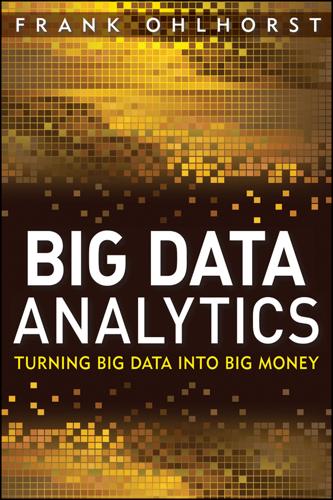
Big Data Analytics: Turning Big Data Into Big Money
by
Frank J. Ohlhorst
Published 28 Nov 2012
With the newer database solutions, there are automated ways of detecting data and triaging systems that appear to have data they shouldn’t. Once you begin to map and understand the data, opportunities should become evident that will lead to automating and monitoring compliance and security through data warehouse technologies. Automation offers the ability to decrease compliance and security costs and still provide the higher levels of assurance, which validates where the data are and where they are going. Of course, automation does not solve every problem for security, compliance, and backup. There are still some very basic rules that should be used to enable security while not derailing the value of Big Data: Ensure that security does not impede performance or availability.

The Great Disruption: Why the Climate Crisis Will Bring on the End of Shopping and the Birth of a New World
by
Paul Gilding
Published 28 Mar 2011
How’s that? Today’s “megamarts,” with so much retail display space, open refrigerators, and the like, have huge physical and environmental footprints. They are designed to encourage you to purchase more, not for operational efficiency. By basing their entire operation out of a centralized, automated warehouse, Ocado has completely eliminated this impact. Given that most people don’t walk to the supermarkets anyway because such stores tend to lie on the edge of town surrounded by huge parking lots, a single delivery van can take countless cars off the road. Aside from their green credibility, their state-of-the-art logistical system will do some neat things, too, like allowing you to choose a delivery time down to the hour and then sending you a reminder on your phone a couple of hours before with the driver’s name and license plate number.

Ghost Road: Beyond the Driverless Car
by
Anthony M. Townsend
Published 15 Jun 2020
As an added benefit, a warehouseless distribution system would eliminate the risks created by having a fulfillment center as a single point of failure. In February 2019, as executives of UK online grocery chain Ocado reported quarterly earnings figures to a roomful of investors in London, the company’s automated warehouse in Andover was burning to the ground, its 600-strong android workforce trapped inside. It took more than 200 firefighters, who were forced to cut holes in the structure’s roof to fight the blaze, some three days to fully extinguish the flames. The widespread use of robofreight will, however, create new systemic risks.
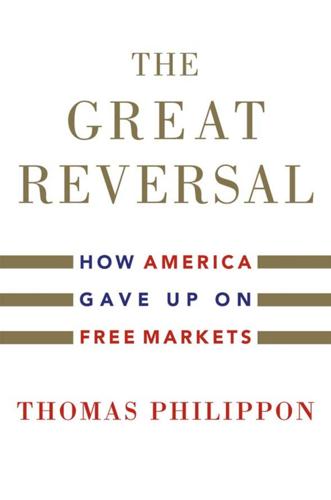
The Great Reversal: How America Gave Up on Free Markets
by
Thomas Philippon
Published 29 Oct 2019
In general merchandise (representing 16 percent of the TFP growth acceleration), the study found that “Wal-Mart directly and indirectly caused the bulk of the productivity acceleration through ongoing managerial innovation that increased competitive intensity and drove the diffusion of best practice.” Similarly, the wholesale trade sector contributed a lot to productivity growth after 1995. In pharmaceuticals wholesaling, the study found that “half of the acceleration was driven by warehouse automation and improvements in organization.” b Suzanne Kapner, “Sears reshaped America, from Kenmore to Allstate.” Wall Street Journal, October 15, 2018. CHAPTER 3 The Rise in Market Power IN 1998 JOEL KLEIN, who ran the antitrust operation at the US Department of Justice, declared in a January 29 address before the New York State Bar Association that “our economy is more competitive today than it has been in a long, long time.”

The AI Economy: Work, Wealth and Welfare in the Robot Age
by
Roger Bootle
Published 4 Sep 2019
This new sort of retail job involves the human element and requires more skill and knowledge, while the boring, repetitive stuff is left to machines. Further up the supply chain, Ocado, the British internet supermarket, is reinventing itself as a supplier of warehouse services to retailers around the world. It has recently landed a contract with the Canadian grocer Sobeys which will launch an online shop with orders picked from an automated warehouse in the Toronto area. There won’t be many jobs for humans in the warehouse. Battery-powered robots are at the center of Ocado’s model. Mind you, robots are still not very good at picking things from the shelves. As a result, warehouses are now using “the Jennifer Unit,” which is a headset that tells human workers what to do.

Invention: A Life
by
James Dyson
Published 6 Sep 2021
James project, Gordon shipped in a prefabricated steel frame from England, raising this on substantial concrete foundations and then wrapping the frame with grand and civic architecture. Inside, the lofty spaces of the well-lit building are on the scale of a cathedral. It seemed exactly the right base for us in Singapore. Opened in 1927, the coal-fired power station was decommissioned in 1976. At first it became an automated warehouse for the Port of Singapore and then, from 2006, a nightclub complex run by Dennis Foo, known as Singapore’s “Nightlife King.” On a typical weekend, between 15,000 and 20,000 clubbers raved the nights away here. Again, the building was a powerhouse, with new Thai bands making their names here alongside clubs dedicated to disco.
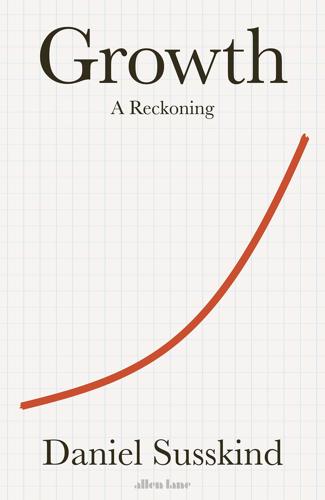
Growth: A Reckoning
by
Daniel Susskind
Published 16 Apr 2024
Those who doubt the power of mere incentives should keep in mind that an international mismatch in these incentives was in all likelihood responsible for the Industrial Revolution unfolding in Britain and not elsewhere. For those who want a more recent case before they are persuaded, it is worth recalling the Covid-19 pandemic and the technological consequences (from a surge in remote work to the acceleration of factory and warehouse automation) that came with a rise in effective wages. The fact that we have this influence over the future makes this a dangerous time, for good and bad. To stand at the helm of an economy that not only has the capacity to undergo exponential growth, but to do so in a direction that we can influence, is – if you have a taste for science fiction – akin to the moment when the pilot of an interstellar spacecraft decides to engage ‘hyperdrive’ and an anxiety descends on the crew as they realize the slightest mistake at ‘warp speed’ could tear the craft to pieces.
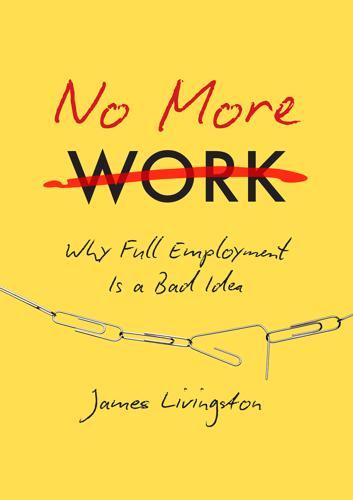
No More Work: Why Full Employment Is a Bad Idea
by
James Livingston
Published 15 Feb 2016
That principle of productivity has been more or less incongruent with reality for a hundred years; but then cultural revolutions typically take about a century. The relation between goods produced and income received has been totally unintelligible for that long, anyway, since the “human element” could be eliminated from the factories, and now from the banks and the stores and the warehouses, by electrification, automation, instrumentation, cybernation, computerization. So, what is to be done? The first thing we do is kill all the bankers. Just kidding; we need them to keep the books. No, the first thing is, we think through what it means to detach income from work. Then we invent practical means of doing so.
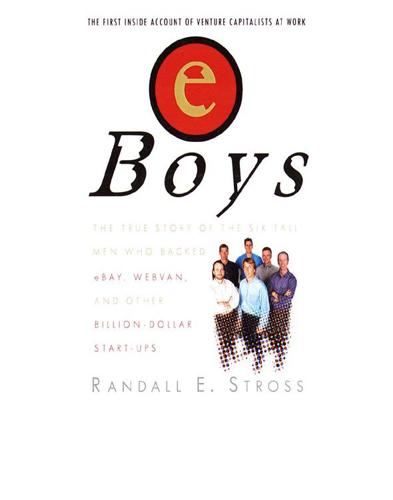
eBoys
by
Randall E. Stross
Published 30 Oct 2008
Borders matter-of-factly defined his chosen corner of the market as “the U.S. retail market,” which happened to be $2.3 trillion as of 1995. When he joined Benchmark, Beirne had said he wanted to pursue a go-big strategy, and this one certainly qualified. But he did not accept the whole vision. He wanted instead to start with groceries only, use Borders’s ideas about hub-and-spokes with an automated warehouse and neighborhood depots to replenish local delivery vans, but drop the idea of retail storefronts, which entailed unnecessary cost and complexity. Would Borders accept a less ambitious vision for this new company’s start? When Dave Beirne met with Borders for the first time, he shared his own thinking about MyStore, with conviction and details that showed it was not something he had cooked up to pander to Borders.

The Equality Machine: Harnessing Digital Technology for a Brighter, More Inclusive Future
by
Orly Lobel
Published 17 Oct 2022
Diversifying and ethically curating the public representation of our communities are, as we’ve seen, both inevitable—there is no choice-free public space—and a moral mandate. Female robots are booming in the sex industry and almost every industry that is witnessing the integration of robots. Around the world, robots are being created to support or replace humans in their work and daily lives. Robots first started revolutionizing work outside the home, from automated warehouses and manufacturing plants to medical procedures. Nowadays, robots are being designed to tackle the invisible work that we (particularly women) perform around the house. Robots are set to revolutionize domestic work, care work, and the work of educating the next generation. These robots, who will be most intimately integrated into our family lives, are looking quite humanoid.
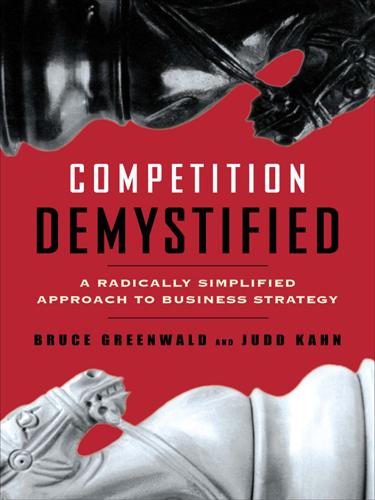
Competition Demystified
by
Bruce C. Greenwald
Published 31 Aug 2016
Target and the other discounters used the machines. So whatever benefits Wal-Mart achieved from its investments here did not account for its advantages over its competitors. The same was true of other sophisticated systems it introduced, like software to plan the merchandise mix in each store or machinery to automate warehouse operations. Wal-Mart was a purchaser of these technologies, not a developer of them. Anything it bought, its rivals could buy as well. Its progressive stance may have given it some short-term leads over the others, but they may have benefited by hiring the same consultants to do the installations, who now had Wal-Mart’s experience, including the inevitable mistakes, on which to draw.
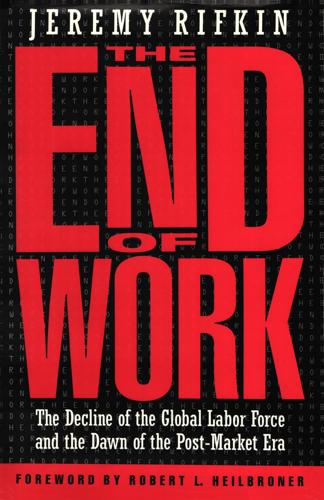
The End of Work
by
Jeremy Rifkin
Published 28 Dec 1994
As we noted in chapter 7, retailers like Wal-Mart are now bypassing wholesalers altogether, preferring to deal directly with manufacturers. With computerized monitoring and scanning equipment at the point of sale, retailers can transmit shipping orders directly to manufacturers' warehouses by way of electronic data interchange (EDI). At the other end, automated warehouses staffed by computer-driven robots and remote-controlled delivery vehicles fill orders in a matter of minutes without the assistance of human physical labor. An increasing number of warehouses are operated by "silicon supervisors" and overseen by a skeleton human workforce whose primary task is to monitor the equipment and serve as traffic controllers.
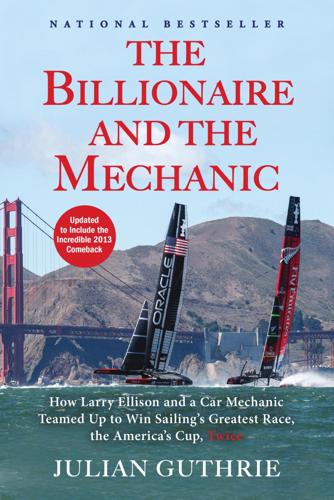
The Billionaire and the Mechanic: How Larry Ellison and a Car Mechanic Teamed Up to Win Sailing's Greatest Race, the Americas Cup, Twice
by
Julian Guthrie
Published 31 Mar 2014
Webvan, the Foster City–based grocery home-delivery service created by executives who had no experience in supermarkets—yet attracted funding from companies including Goldman Sachs, Benchmark Capital, Sequioa Capital, and Yahoo—filed for bankruptcy in 2001 after burning through hundreds of millions of dollars to buy a fleet of trucks, build automated warehouses, and expand aggressively nationwide. “The bubble went on and on and my confidence was beginning to waver,” Larry said. He had begun to think perhaps he was wrong: Maybe profits didn’t mean a thing. Maybe it was all clicks and eyeballs and maybe he should retire. “The companies were saying it was a new economy, that making money wasn’t the thing,” Larry said to Catz.

The Best Business Writing 2013
by
Dean Starkman
Published 1 Jan 2013
Graves’s warehouse installed a German system that automatically stores and retrieves cases of food. That led to the elimination of 106 jobs, roughly 20 percent of the work force. The new system was initially maintained by union workers with high seniority. Then that job went to the German company, which hired nonunion workers. Now Kroger plans to build a highly automated warehouse in Tolleson. Sixty union workers went before the City Council last year to oppose the plan, on which the city has not yet ruled. “We don’t have a problem with the machines coming,” Mr. Graves told city officials. “But tell Kroger we don’t want to lose these jobs in our city.” Some jobs are still beyond the reach of automation: construction jobs that require workers to move in unpredictable settings and perform different tasks that are not repetitive; assembly work that requires tactile feedback like placing fiberglass panels inside airplanes, boats, or cars; and assembly jobs where only a limited quantity of products are made or where there are many versions of each product, requiring expensive reprogramming of robots.

Humans as a Service: The Promise and Perils of Work in the Gig Economy
by
Jeremias Prassl
Published 7 May 2018
The basic idea here is that as long as humans can complete a certain task at very low cost, there is no need to invest in the development, installation, and maintenance of innovative machines. As The Economist’s Ryan Avent puts it: [T]he abundance of labour, and downward pressure on wages, reduces the incentive to invest in new labour-saving technologies. Until pressed, firms don’t overhaul and automate their warehouse or swap out some wait staff for touchscreens. So productivity within sectors grows more slowly than it other- wise might. There are dynamic effects as well: when you don’t deploy new technologies because labour is cheap, you don’t get all the tweaks and knock- on innovations and accumulation of intangible capital that contributes to still more productivity growth down the road.73 There is plenty of evidence to support this claim, both historically and more recently.

WTF?: What's the Future and Why It's Up to Us
by
Tim O'Reilly
Published 9 Oct 2017
But what can we call Amazon but an on-demand company, when increasingly its products are delivered same-day (sometimes even by a network of on-demand drivers in their own cars rather than by traditional package delivery companies)? What does on-demand become when companies around the world are experimenting with delivery by autonomous drone, and when Amazon’s automated warehouses require only a minute of human labor per package, with most of the work being done by a complex ballet of software and machines? On-demand delivery is an example of how WTF? services introduced by tech companies become, like Tom Stoppard’s unicorn, “as thin as reality,” the stuff of ordinary life.
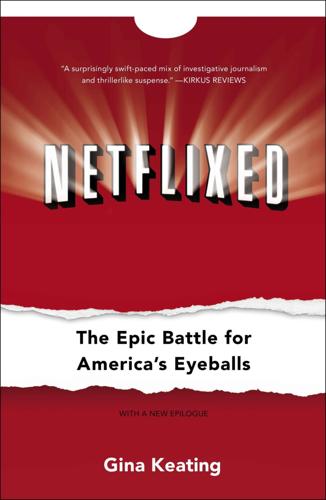
Netflixed: The Epic Battle for America's Eyeballs
by
Gina Keating
Published 10 Oct 2012
Dillon was tall and burly and had snow-white hair, as well as a gruff demeanor that masked a mischievous sense of humor. Randolph and Hastings initially hesitated in hiring him, worried about both the small salary and that Dillon, who had run international operations for Seagate, would not be hands-on enough in the Netflix vault warehouse, which lacked automation and had a tiny staff. Dillon, then fifty-five, assured them he wanted to be around smart people who were doing something fun and interesting, and Netflix looked like the perfect opportunity. He signed a contract at a third of his normal pay rate as a show of good faith, and officially was hired the same day as McCarthy.
…
Although most customers ordered three disks at a time, gathering and shipping each order in a single mailer proved so time-consuming that Dillon’s analysis showed it was cheaper to ship each disk separately, as it became available, instead of waiting to accumulate complete orders. Dillon improved on Cook and Meyer’s software program, which assigned each order to a numbered mailbag based on its extended zip code in order to speed up the distribution of orders without costly automated postal sorters. The warehouse staff, then numbering about twenty, used a handheld supermarket scanner to read a bar code on the order form and then dropped the mailers into the correct bag. The system was rudimentary, but it soon cut total delivery costs below the two dollars per disk that Dillon had targeted.

Genius Makers: The Mavericks Who Brought A. I. To Google, Facebook, and the World
by
Cade Metz
Published 15 Mar 2021
“I’ve worked in the logistics industry for more than sixteen years and I’ve never seen anything like this,” said Peter Puchwein, vice president of Knapp, an Austrian company that had long provided automation technology for warehouses and helped develop and install the Covariant technology in Berlin. It showed that robotic automation would continue to spread across the retail and logistics industry in the years to come, and perhaps across manufacturing plants, too. It also raised new concerns over warehouse workers, losing their jobs to automated systems. In the German warehouse, the jobs of three humans were done by one robot. At the time, though, economists didn’t think this kind of technology would diminish the overall number of logistics jobs anytime soon.
…
Navy, 15–19 and machine learning, 48 single-layer network design, 36–37 Perceptrons (Minsky and Papert), 25, 33–34, 44, 194 pharmaceutical industry, deep learning’s ability to help the, 181–83, 271 photo manipulation, 209–11 photo-realistic faces, 210 Pichai, Sundar, 216–17, 241, 243, 263–65 Pinker, Steven, 266–67 Pomerleau, Dean, 43–44, 49, 137, 256–57 pornography, 231 Poulson, Jack, 249, 250 Principles of Neurodynamics (Rosenblatt), 22–23 privacy concerns GDPR (General Data Protection Regulation), 248 medical data from the Royal Free NHS Trust shared with DeepMind, 188 Progressive GANs, 210 Project Mack Truck, 138–39 Project Marvin, 83 Project Maven building a system for identifying drone strike targets, 240 contract with Google, 243 Google employee petition against, 247–50 meeting with Google, 240–43 Puchwein, Peter, 284–85 QSAR (quantitative structure-activity relationship), 182–83 Quake III (game), 295–97 Raji, Deborah, 230–32, 236–38 RankBrain, 139 Ranzato, Marc’Aurelio, 89, 124–27 Rashid, Rick, 130 Rebooting AI (Marcus), 270 Redmond, Michael, 174 reinforcement learning, 111–12, 113, 280, 309–10 research expense of recruiting and retaining the talent pool, 132 freely traded building blocks based on Linux, 131 immigration policies’ effect on foreign talent, 207–08 increased investments in, 136, 138–40 open research concept, 127–28, 129–32 Research in Motion (RIM), 75 robotics ABB robotics contest, 283–84 Amazon contest for warehouse picking, 278–79 the Arm Farm, 279–81 Google Brain robotics group, 279–81 learning human movement, 279–81 programming behavior and skills, 277 robots using dreaming to generate pictures and spoken words, 200 Rubik’s Cube demonstration, 276–78, 281, 297–98 use of Covariant’s automation technology in a Berlin warehouse, 284–85 Rosenblatt, Frank criticism of backpropagation, 38 death, 26–27 education and training, 17 Mark I machine development, 18 Perceptron machine demonstration, 15–19 research efforts, 25–26, 34, 36 rivalry with Marvin Minsky, 21–22, 24–25 Rubik’s Cube demonstration at OpenAI, 276–78, 281, 297–98 Rumelhart, David, 37–39, 97 Sabour, Sara, 208, 305 Salakhutdinov, Russ, 63 Schmidhuber, Jürgen, 59–60, 141–42 Schmidt, Eric, 173, 182, 216, 217, 220, 225, 242 Schroepfer, Mike (“Schrep”), 120, 123, 126, 167–69, 254–55, 257, 258–60 Science (journal), 105 Scott, Kevin, 85–86 security concerns adversarial attacks, 212–13 “air gap” systems, 246–47 medical data from the Royal Free NHS Trust shared with DeepMind, 188 Sedol, Lee, 171–72, 174–78, 216 Segal, Adam, 208 Segura, Marc, 284 Sejnowski, Terry, 29, 39–40, 49–50, 65 self-belief, 293–94 self-driving vehicles ALVINN project, 43–44, 53 Chauffeur project, 137–38, 142 China’s ability to develop, 226–27 exaggerated claims about, 271 Qi Lu’s proposal to Microsoft, 197–98 at Tesla, 155–56 using deep learning, 137–38 Sequence to Sequence paper on machine translation, 183 Shanahan, Patrick, 246 Silicon Valley scale, 293–94 self-belief and conviction, importance of, 293, 306–07 venture capital firms, 160–61 Silver, David AlphaGo project, 171, 173–74, 175, 198 artificial intelligence research, 104–05 as cofounder of Elixir, 103 and Demis Hassabis, 101–02, 103, 104–05 Simon, Herbert, 22, 288 Singhal, Amit, 83–84, 139 the Singularity Summit, 107–09, 325–26 SNARC machine, 21 speech recognition and Android smartphones, 77–79 deep learning and neural speech recognition, 67–68 Google Duplex technology, 265–66 Li Deng’s research on, 66–67, 218 speed of technological progress, 60 SRI (Stanford Research Institute), 20, 24 Stanford University, 57, 85 StarCraft (game), 296–97 statistical translation, 55–56 Suleyman, Mustafa (“Moose”), 107, 115–16, 157–58, 186–88, 244, 248, 294–95, 300–01 superintelligence, 105–06, 153, 156–60, 311 Superintelligence: Paths, Dangers, Strategies (Bostrom), 153 surveillance.

Lifestyle Entrepreneur: Live Your Dreams, Ignite Your Passions and Run Your Business From Anywhere in the World
by
Jesse Krieger
Published 2 Jun 2014
All of our orders are handled this way, including wholesale and distributor orders which come in through a private trade-only website. My companies are largely structured on a fabric of technology. The system I have set up is heavily dependent on automation, outsourced labor and the internet. Our stock is managed in real-time, and crosschecked with the warehouse, again, using automated software. When we find ourselves running low on any item, an email is sent to me by the system with a stock report. Using algorithms we can take into account lead times and sales performance before these warnings are sent. From here I can create a purchase order with our manufacturers in China, the USA, or the UK.
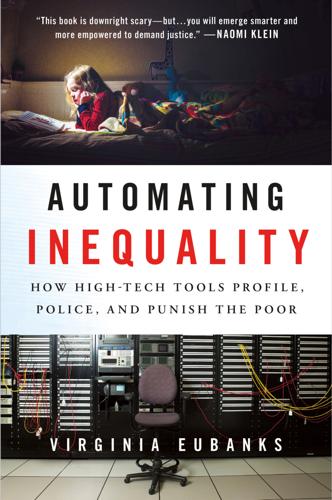
Automating Inequality
by
Virginia Eubanks
See Indiana, Committee on Welfare Privatization Issues creative economy in Los Angeles in Pennsylvania criminalization and automated decision-making and digital poorhouse and homelessness and poverty and welfare reform Crouch, Suzanne Culhane, Dennis Cullors, Patrisse cultural denial Cunningham, Mary Dalton, Erin Daniels, Mitch Dare, Tim data analytics, regime of mining and right to be forgotten security warehouse decision making automated and big data human and inclusion revolutionary change in and scientific charity tracking of and transparency Declaration of Independence deindustrialization in Indiana in South LA Denton, Nancy A. Department of Housing and Urban Development (HUD) dependency digital decision-making.
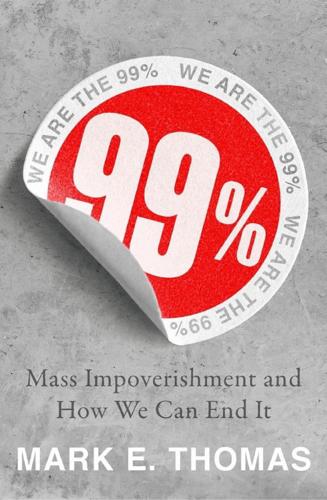
99%: Mass Impoverishment and How We Can End It
by
Mark Thomas
Published 7 Aug 2019
Currently, for example, around 13 per cent of the US population are employed in the Retail and Transportation industries.25 There are signs that many of these jobs will not exist in a few years’ time – we have self-service checkouts in supermarkets; some fast food restaurants have introduced screen-based ordering; driverless trains are a reality today; driverless cars have already reached a high level of technical proficiency, and cars with some degree of autonomy (e.g. motorway driving) are already on the market; warehouses increasingly use automated picking and packing technologies. In these areas alone, we could see tens of millions of jobs disappear. But this is just the beginning. Another team at Oxford has been taking a close look at the possibilities for automation in the US. Carl Frey and Michael Osborne examined over 700 occupational categories and for each one assessed the probability that jobs in that sector would be automated within the next twenty years.

Gambling Man
by
Lionel Barber
Published 3 Oct 2024
Although many went under in the dot-com crash, a good number went on to be real businesses generating real profits. The internet, meanwhile, became seamlessly integrated into daily life, just as Masa expects AI will in the none-too-distant future. Today SoftBank’s portfolio includes China’s ride-hailing Didi and internet giant ByteDance; food-delivery services like DoorDash and Grab; as well as automated robotic warehouses like Symbotic. These were the ‘first wave’ of AI-related companies with ‘baby’ applications. In 2024 Masa invested in next-generation AI companies such as the US medical data firm Tempus and the UK self-driving car technology start-up Wayve. The emergence of ChatGPT, according to Masa, has changed everything.

The Stack: On Software and Sovereignty
by
Benjamin H. Bratton
Published 19 Feb 2016
On Amazon's ongoing implementation of robotic systems in its warehouse and distribution chain, see Sam Grobart, “Amazon's Robotic Future: A Work in Progress,” Bloomberg Business Week, November 30, 2012, 2012 http://www.bloomberg.com/bw/articles/2012-11-30/amazons-robotic-future-a-work-in-progress and Sarah O’Connor, “Amazon's Human Robots: They Trek 15 Miles a Day around a Warehouse, Their Every Move Dictated by Computers Checking Their Work. Is This the Future of the British Workplace?” Mail Online, March 1, 2013, http://www.dailymail.co.uk/news/article-2286227/Amazons-human-robots-Is-future-British-workplace.html. Amazon also purchased Kiva Systems, a leading manufacturer of warehouse automation systems. See Scott Kirsner, “Amazon Buys Warehouse Robotics Start-Up Kiva Systems for $775 Million,” Boston.com, March 19, 2012, http://www.boston.com/business/technology/innoeco/2012/03/amazon_buys_warehouse_robotics.html. 65. Stowe Boyd, “If Amazon Is the Future of Work, Then Be Afraid,” Gigaom Research, February 22, 2013, http://research.gigaom.com/2013/02/if-amazon-is-the-future-of-work/. 66.
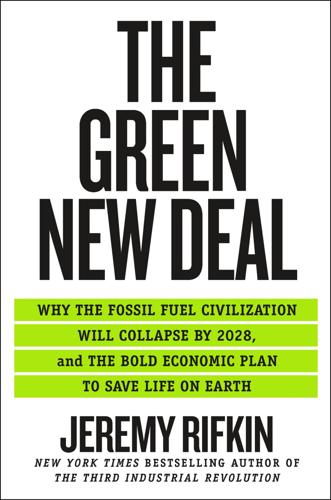
The Green New Deal: Why the Fossil Fuel Civilization Will Collapse by 2028, and the Bold Economic Plan to Save Life on Earth
by
Jeremy Rifkin
Published 9 Sep 2019
This will ensure that all the carriers are fully loaded in their trailers at all times and that shipments are sent along the most efficient path en route to their final destination. The Internet of Things platform will provide real-time logistical data on pickup and delivery schedules, weather conditions, and traffic flows, with up-to-the-moment information on warehouse storage capacities. Automated dispatching will use Big Data and analytics to create algorithms and applications to ensure the optimization of efficiencies along the logistical routes and, by doing so, increase productivity and reduce the carbon footprint while also reducing the marginal cost of every shipment.

The Lonely Century: How Isolation Imperils Our Future
by
Noreena Hertz
Published 13 May 2020
In a sweeping study of election results across fourteen Western European countries between 1993 and 2016, researchers led by Massimo Anelli at Bocconi University in Milan found that not only were people living in areas where automation was taking place fastest significantly more likely to feel marginalised, disconnected from and dissatisfied with government, but the greater the level of ‘automation exposure’ in an area the greater the probability the people living there would vote for a nationalist or far-right party.88 This makes the scenario we are currently facing – in which automation is ramping up at the same time as we’re experiencing significant levels of unemployment – especially concerning. No one will be spared Many of the people we’ve already met in this book will be first in the line of fire when it comes to these building waves of automation: delivery warehouse workers like Reynalda; the millions of cashiers who will no longer be needed when more and more of us shop in staff-free Amazon Go-style stores (in the US nearly 3.5 million people work as cashiers); or bakers like Eric, the right-wing populist voting Frenchman, who will soon face competition from robots like BreadBot, the recently launched robot baker which can mix, form, prove and bake 235 loaves of bread a day.89 These are people who already feel disproportionately alienated and disenfranchised, many of whom are also of course the ‘essential’ workers we all so relied upon during lockdown.90 But whilst those of us in ‘knowledge economy’ jobs tend to think we’ll be spared, telling ourselves there’s no way a robot could possibly do what we do, it’s important to realise that the story is more nuanced.

The Measure of Progress: Counting What Really Matters
by
Diane Coyle
Published 15 Apr 2025
It remains to be seen how much this will spread (our local Amazon Go store has already closed). And then there’s online shopping, which requires me to pay a fee to have other humans doing the picking and delivery for me, but t here is no scanning and queueing on my part at all. This is enabled by digitised logistics and increasingly automated picking in warehouses, pioneered by Amazon but being adopted far more widely. What does this trajectory of broadly substituting capital (physical and intangible) for paid labour do to our understanding of economic change? Paid l abor productivity as m easured w ill have increased thanks to capital deepening.

Digital Accounting: The Effects of the Internet and Erp on Accounting
by
Ashutosh Deshmukh
Published 13 Dec 2005
Searchspace functionalities Anti money laundering Financial fraud Searchspace •Check fraud •Debit card fraud •Electronic payment fraud •ATM deposit fraud •Identity theft •Financial service industry •Insider trading •NYSE rules 92 and 97 •Market manipulation •Anti money laundering Compliance Operational risk •Business risk •Policy enforcement Customer relationship management Exhibit 18. Searchspace operations Data manager Collect data from operational systems of the business Adaptive profiling engine Use the collected data to develop different profiles or patterns Operational data store Collect the different profiles in a central data warehouse Sentinels Automated software agents that monitor the profiles and look for anomalies, exceptions, and aberrations Action manager Based on the finding of sentinels appropriate actions are taken Reports to the user Copyright © 2006, Idea Group Inc. Copying or distributing in print or electronic forms without written permission of Idea Group Inc. is prohibited.

AI 2041: Ten Visions for Our Future
by
Kai-Fu Lee
and
Qiufan Chen
Published 13 Sep 2021
Today robots already pick up, move, and manipulate many objects. Later they will be able to coordinate among multiple robots, handle complex planning tasks, and deal with errors and unusual situations. Full automation of factories and warehouses will take a long time, because some tasks require human manual dexterity, precise hand-eye coordination, or dealing with new situations and environments. But by 2041, warehouses should be virtually automated, while factories will be mostly automated. Agriculture is a surprising low-hanging fruit. While manufacturing a phone, a shirt, or a shoe are completely different, fertilizing, spreading insecticide, and seeding are relatively similar for many types of crops.

Robots Will Steal Your Job, But That's OK: How to Survive the Economic Collapse and Be Happy
by
Pistono, Federico
Published 14 Oct 2012
What about the value added that only a human employee can offer?” Have you ever worked at a mall? If so, how motivated were you, and how long did that last? “But you need human workers to place the products on the shelves, that much you do!” Actually, even that technology is already available, though it is more recent than the others. Some warehouses are already completely automated, and require only operators to work and handle the entire task. Pallets and product move on a system of automated conveyors, cranes and automated storage and retrieval systems coordinated by programmable logic controllers and computers running logistics automation software. Their accuracy and productivity is far greater than any human could ever dream of.

Whiplash: How to Survive Our Faster Future
by
Joi Ito
and
Jeff Howe
Published 6 Dec 2016
DJI had the feel of a Silicon Valley start-up mashed together with the work ethic and tradecraft of the factories the group had been visiting. The tour also visited a very high-end, top-tier mobile phone factory that made millions of phones. All of the parts were delivered by robots from a warehouse that was completely automated. The processes and the equipment were the top of the line and probably as sophisticated as at any factory in the world. Then there was the tiny shop that could assemble very sophisticated boards in single-unit volumes for a price comparable to a typical monthly cable TV bill, because they make them by hand.
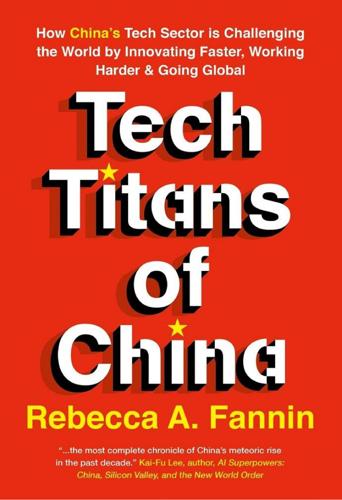
Tech Titans of China: How China's Tech Sector Is Challenging the World by Innovating Faster, Working Harder, and Going Global
by
Rebecca Fannin
Published 2 Sep 2019
Digging deeper into e-commerce, JD.com has embarked on a strategy to provide technology and logistics smarts as a retail service for its merchants and other retailers. This new initiative includes robotics-operated fulfillment centers, big-data analysis of merchandise sales, and supply-chain management. The company’s logistics operation, which I saw at work in a Beijing warehouse, is pioneering with full automation. The operation spans to drones to reach rural areas, autonomous delivery vehicles on Beijing university campuses, and self-driving trucks on select routes. Tencent has likewise begun digging into e-commerce too in China. Tencent bought into Alibaba’s main rivals, purchasing 20 percent stakes in e-commerce giant JD.com and two hot startups that went public in 2018: Meituan and Pinduoduo.

The Globotics Upheaval: Globalisation, Robotics and the Future of Work
by
Richard Baldwin
Published 10 Jan 2019
The Amazon Example—Trimming the Blanket Amazon has deployed an army of white-collar robots to speed up what they call the “click to ship” time—the amount of time that elapses between the time you hit the “buy” button on your screen and the time the item actually leaves the Amazon warehouse closest to you. This automation has meant faster Amazon delivery, which in turn is helping Amazon and other online retailers undercut brick-and-mortar stores. With this e-commerce booming, Amazon is hiring. In 2017, almost a million people worked in warehousing in the US—that’s up by over four hundred thousand workers, according to Bloomberg.15 In the UK alone, Amazon created 2,500 new permanent jobs in 2016.

Reinventing Organizations: A Guide to Creating Organizations Inspired by the Next Stage of Human Consciousness
by
Frederic Laloux
and
Ken Wilber
Published 9 Feb 2014
Society could be entering a new phase—one in which fewer and fewer workers are needed to produce and distribute all the goods and services consumed. Take retail: we already purchase many items from websites whose algorithms, with no human intervention, suggest what we might like. Soon the warehouses might be fully automated, and one day self-driving trucks could deliver the parcels. Some people lament the loss of jobs, but that perspective fails to see the possibly revolutionary implications. Up until now, the vast majority of human population has had to perform less-than-exciting work to make a living.

The Zero Marginal Cost Society: The Internet of Things, the Collaborative Commons, and the Eclipse of Capitalism
by
Jeremy Rifkin
Published 31 Mar 2014
And even though the USPS took pride in the automation of its sorting and handling systems, once praised as the most advanced in the world, it is now facing near-extinction as more of its letter-carrying business is shifting over to e-mail.22 Automation is replacing workers across the entire logistics industry. Amazon, which is as much a logistics company as a virtual retailer, is adding intelligent automated guided vehicles, automated robots, and automated storage systems in its warehouses, eliminating less efficient manual labor at every step of the logistical value chain with the goal of getting as close as possible to near zero marginal labor costs. That goal is now within sight with the introduction of driverless vehicles. The prospect of eliminating human driving with the substitution of driverless vehicles operating on smart roads, once relegated to the realm of science fiction, will soon be operational.

Editing Humanity: The CRISPR Revolution and the New Era of Genome Editing
by
Kevin Davies
Published 5 Oct 2020
He divulged his plans to Collins in the United Airlines lounge at Washington Dulles airport, and then to the world via the front page of the New York Times. His new company, Celera Genomics, vowed to cut through years of government inefficiency and bureaucracy to compile the sequence faster and cheaper using a warehouse full of the latest automated sequencing machines—each named after a sci-fi character—plus a massive Compaq supercomputer to crunch the data. As a consolation prize, Venter said Collins could sequence the mouse genome instead. Almost overnight, the tables had been turned: the “Darth Vader” of genomics had the weaponry and momentum; Collins and his allies were the plucky overmatched rebels with their backs against the wall.

Site Reliability Engineering: How Google Runs Production Systems
by
Betsy Beyer
,
Chris Jones
,
Jennifer Petoff
and
Niall Richard Murphy
Published 15 Apr 2016
As mentioned earlier, our evolution of turnup automation followed a path: Operator-triggered manual action (no automation) Operator-written, system-specific automation Externally maintained generic automation Internally maintained, system-specific automation Autonomous systems that need no human intervention While this evolution has, broadly speaking, been a success, the Borg case study illustrates another way we have come to think of the problem of automation. Borg: Birth of the Warehouse-Scale Computer Another way to understand the development of our attitude toward automation, and when and where that automation is best deployed, is to consider the history of the development of our cluster management systems.6 Like MySQL on Borg, which demonstrated the success of converting manual operations to automatic ones, and the cluster turnup process, which demonstrated the downside of not thinking carefully enough about where and how automation was implemented, developing cluster management also ended up demonstrating another lesson about how automation should be done.